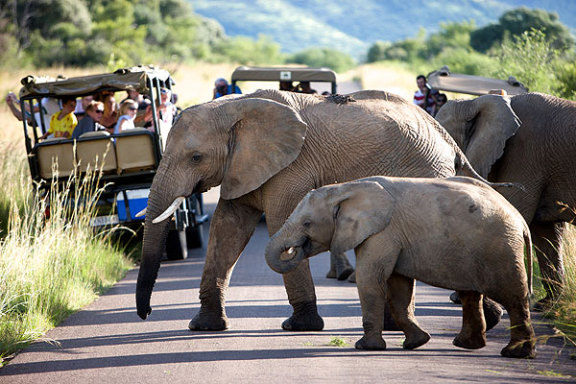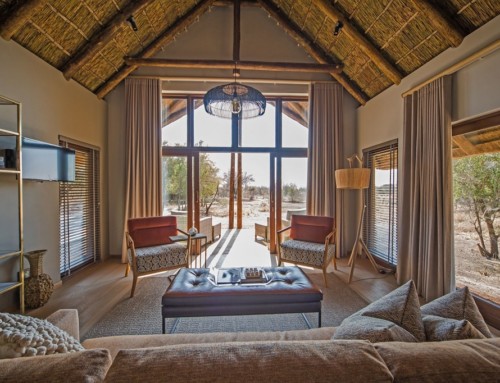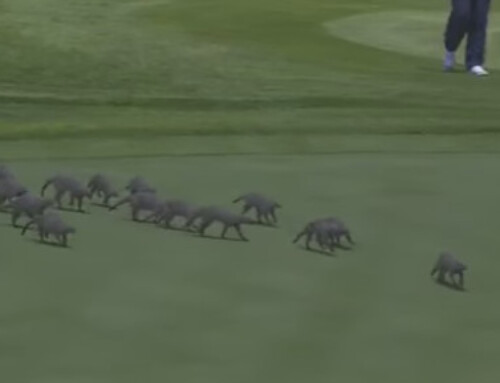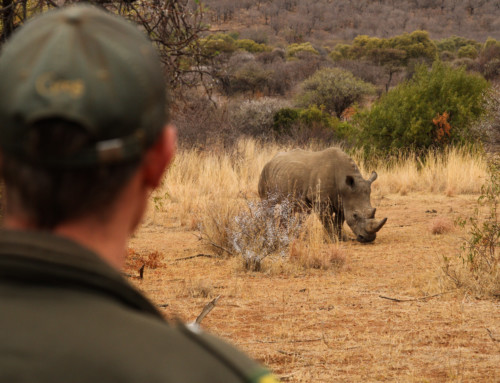I’d wager that almost anyone that’s been to popular national parks and game reserves that are open to self-drivers, such as Pilanesberg and Kruger, will have at least one horror story about bad behaviour of other visitors in these parks.
We’ve named and shamed wrongdoers by posting (where available) photos on Facebook. We’ve encouraged you to continue to help us in calling out future wrongdoers. We’ve also written previously on this site about the complaints raised not only with regards to the behaviour of self-drivers in Pilanesberg but also about game rangers acting like “a law unto themselves” as one commenter put it.
But a few recent events make it worth revisiting the issue of people behaving responsibly (or not) and showing the correct etiquette (or not) when game driving in Pilanesberg.
Firstly, in the past couple of months there have been two widely-covered attacks on visitors in vehicles by big cats. The first saw a lioness kill an American tourist and badly injure a guide in Lion Park, Pretoria. The second incident saw a leopard attack a guide in Kruger.
In the first incident, both the guide and the deceased tourist have been criticized for not having the windows of the vehicle closed. In the second incident, the leopard was accidentally run over by both the guide that was attacked in his safari vehicle, and then by a private vehicle, a particularly lamentable part of this whole incident; the leopard later had to be euthanized. Videos of this second attack also show many tourists leaning out of open windows to get a look at what’s happening.
The other recent development that prompts a revisit of the discussion around responsible driving in Pilanesberg (and any other game park for that matter) is the recent release of a survey by The Endangered Wildlife Trust which focused on determining the causes of roadkill in Pilanesberg.
The survey suggests that speeding is certainly a factor in roadkill, and speeding is a regular complaint we get from visitors to Pilanesberg. But much more prominent was lack of observation, such as people running over wildlife in the road because they are too busy looking at the bush on either side of the road. Lack of observation might seem to be in keeping with the running over of the leopard in Kruger, at least with regards to the second vehicle.
With all of this in mind, we’d like to remind you all to drive carefully and responsibly in Pilanesberg, and in any other parks and reserves in South Africa for that matter. Keep your windows closed and don’t lean out of vehicles. Stick to the speed limits. Be observant and aware of what’s happening on the road – you might be just as likely to find wildlife on the road is in the natural surroundings. Be considerate to other visitors. Give the animals space and right of way. Don’t make noise at sightings. Leave the park on time.
It all sounds like common sense, but when people and animals keep dying as a result of neglecting to obey these rules, it remains very much worth reiterating. Please continue to call out others who undermine this important code of conduct. It’s for their own good, as well as for the good of Pilanesberg’s astonishing wildlife.







#SafariLive Responsible game driving in Pilanesberg http://t.co/3tc2DZO8dn
The Wildlife and Roads Project undertook a study in Pilanesberg National Park in 2014 to examine roadkill rates…. http://t.co/IjtilRAHUG
This is a topic that comes up again and again, but in light of recent events at Kruger and Lion Park and a new… http://t.co/GdfvyaPQp7
RT @PilanesbergNP: Responsible game driving in Pilanesberg: I’d wager that almost anyone that’s been to popu… http://t.co/MFil1LEkiC